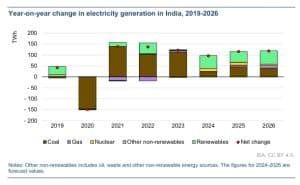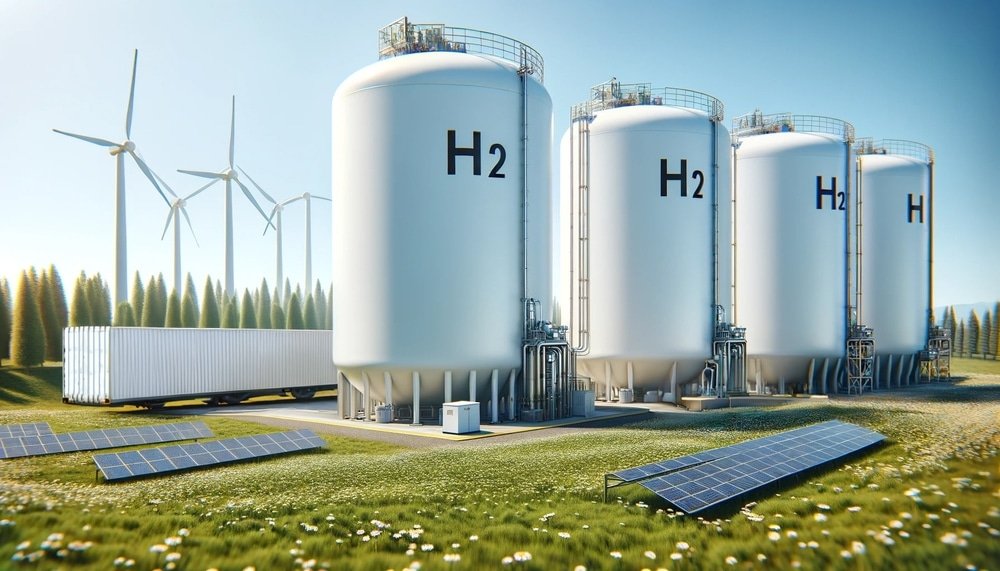The World Bank approved $1.5B to boost India’s low-carbon energy. This operation aims to spark India’s green hydrogen market, expand renewable energy, and drive funding for low-carbon projects. The funding, announced on June 29 represents the second phase of the Low-Carbon Energy Programmatic Development Policy Operation.
Transforming India’s Renewable Energy Market with a US$1.5B Investment Plan
India, the fastest-growing enormous economy globally, is set to maintain its rapid expansion. To decouple this growth from emissions, scaling up renewable energy, particularly in hard-to-abate industrial sectors, is essential. This strategy aims to ramp up green hydrogen production and consumption, alongside accelerating climate finance to support low-carbon investments. Elaborating further, the second phase of US$1.5B is meant to transform India’s RE market by:
- Producing ~ 450,000 MT of green hydrogen and 1,500 MW of electrolyzers annually from the financial year 2025-2026. It will cover the costs of the latest technology required for green hydrogen production.
- Boosting renewable energy capacity by incentivizing battery energy storage solutions Additionally, it promotes renewable energy integration through incentives for battery energy storage and amendments to the Indian Electricity Grid Code. This is poised to reduce emissions by 50MTS annually.
- Advancing the development of a national carbon credit market.

Auguste Tano Kouame, World Bank Country Director for India noted,
“The World Bank is pleased to continue supporting India’s low-carbon development strategy which will help achieve the country’s net-zero target while creating clean energy jobs in the private sector. Indeed, both the first and second operations have a strong focus on boosting private investment in green hydrogen and renewable energy.”
First Low-Carbon Energy Program Achievements
Last year (2023) in June, the World Bank approved the $1.5 B First Low-Carbon Energy Programmatic Development Policy Operation. According to the World Bank, this initiative facilitated transmission charge waivers for renewable energy in green hydrogen projects in India. It also outlined a clear strategy to launch 50 GW of renewable energy tenders annually and established a legal framework for a national carbon credit market.
Aurélien Kruse, Xiaodong Wang, and Surbhi Goyal, Team Leaders for the operation, jointly said,
“The operation is helping in scaling up investments in green hydrogen and in renewable energy infrastructure. This will contribute towards India’s journey for achieving its Nationally Determined Contributions targets.”
The executives also praised India’s efforts to establish a robust domestic market for green hydrogen, supported by a fast-growing renewable energy capacity. They noted that the first tenders under the National Green Hydrogen Mission’s incentive scheme have attracted significant private sector interest.
India’s Renewable Energy Landscape through IEA Lens
IEA’s 2024 release talks about the connection between India’s economy and renewable energy demand. India’s GDP grew by 7.8% in 2023, making it the world’s fastest-growing major economy and the fifth largest globally. Energy demand in India is expected to outpace all regions by 2050 due to urbanization and increased demand for electricity, cement, and steel. This reliance on imported fossil fuels could increase carbon emissions significantly. Hence, an urgency to curb emissions and become net zero by 2070.

Latest media reports say that India entered the sovereign green bond market in January 2023, issuing bonds worth $1B. This has spurred clean energy investments, reaching $68B in 2023. Fossil fuel investment also rose to $33 billion. To meet the energy and climate goals, India needs to double clean energy investment by 2030. However, this would suffice with an extra 20% boost. Lowering capital costs is key to making this happen.
As of March 2024, India’s thermal power accounts for 56% of installed capacity, while renewable energy sources contribute 32%, hydroelectric power 11%, and nuclear power 2%. The World Bank has supported this transition with this huge loan.
- India’s goal is to build 47 GW/236 GWh of battery storage and produce 5 MMT of clean hydrogen by 2030.
- India also plans to achieve 40 GW of electrolyzer manufacturing capacity, 30 MMT of carbon capture, and 2 MMT of sustainable aviation fuels by 2030.
Overall, the World Bank funding can accelerate India’s commitment to surpassing 500 GW of renewable energy capacity by 2030. Further aiming to lead in advanced energy solutions. With energy giants like Tata, Adani, and Reliance, the country is close to achieving its energy transition goals.

